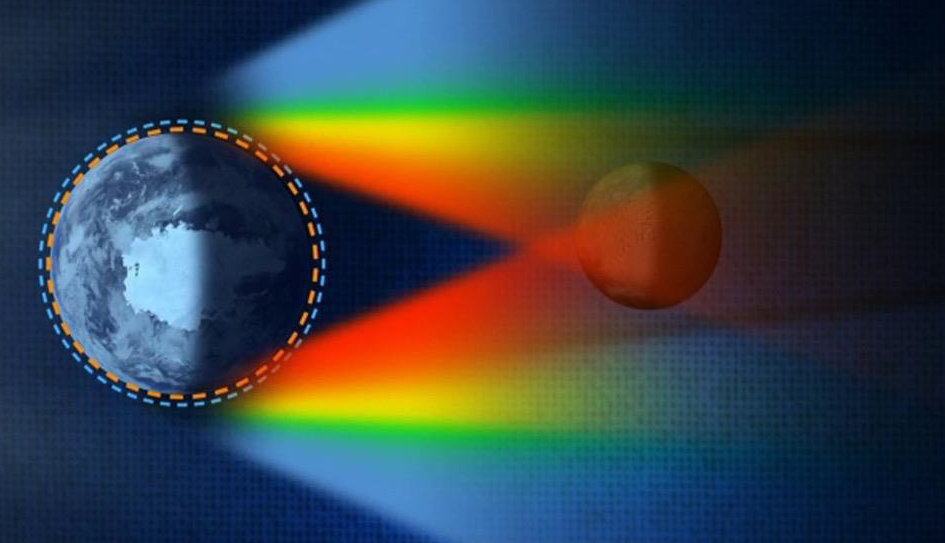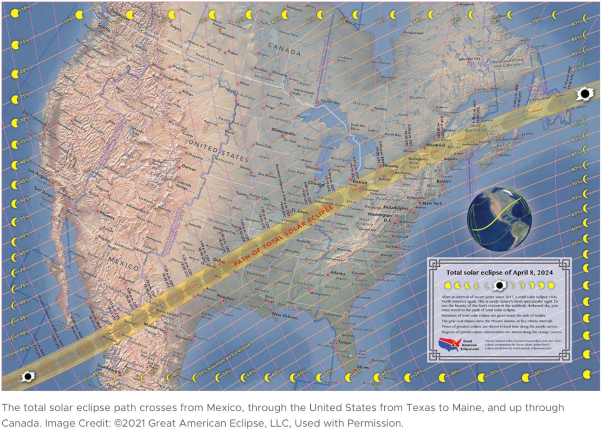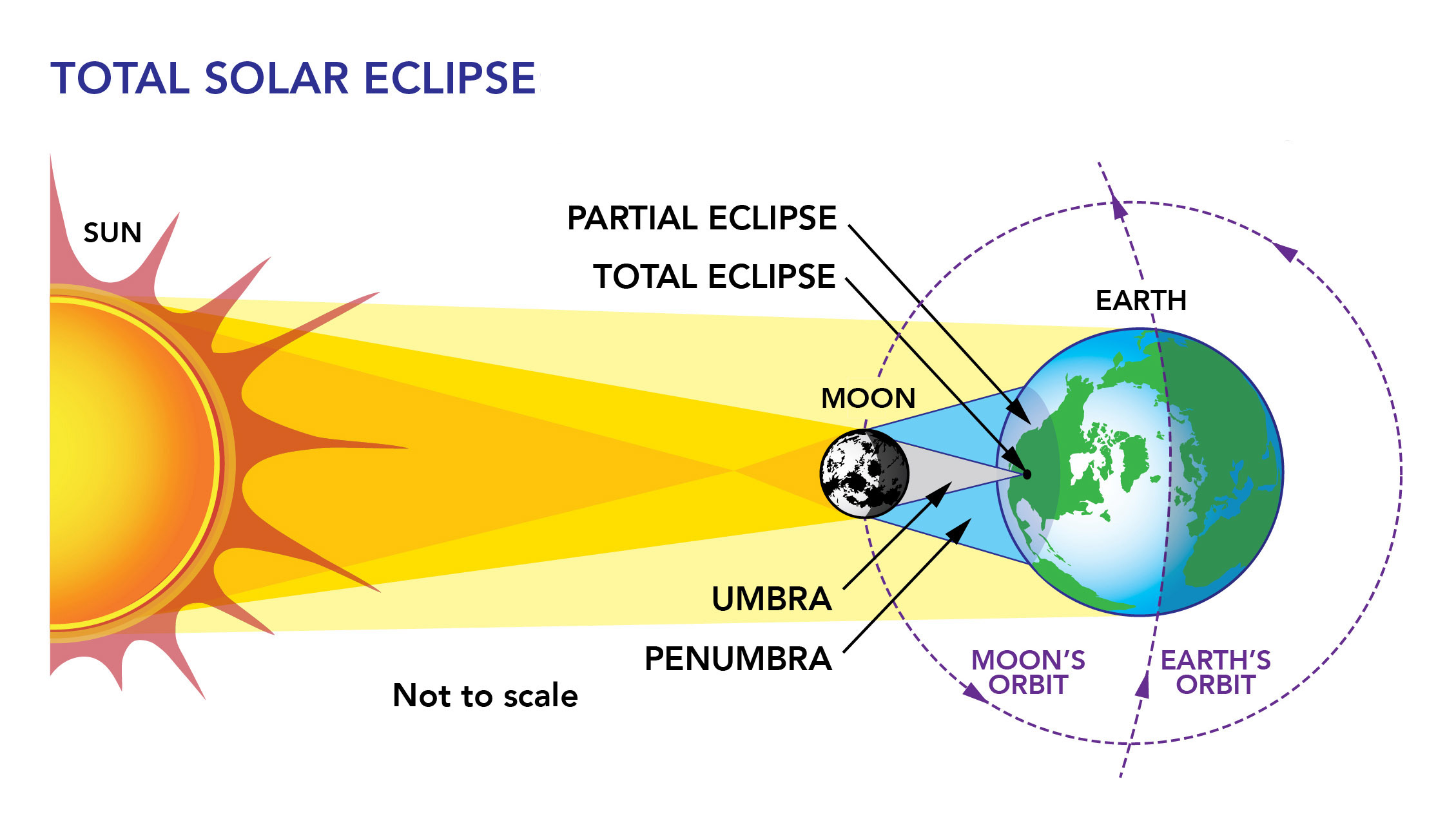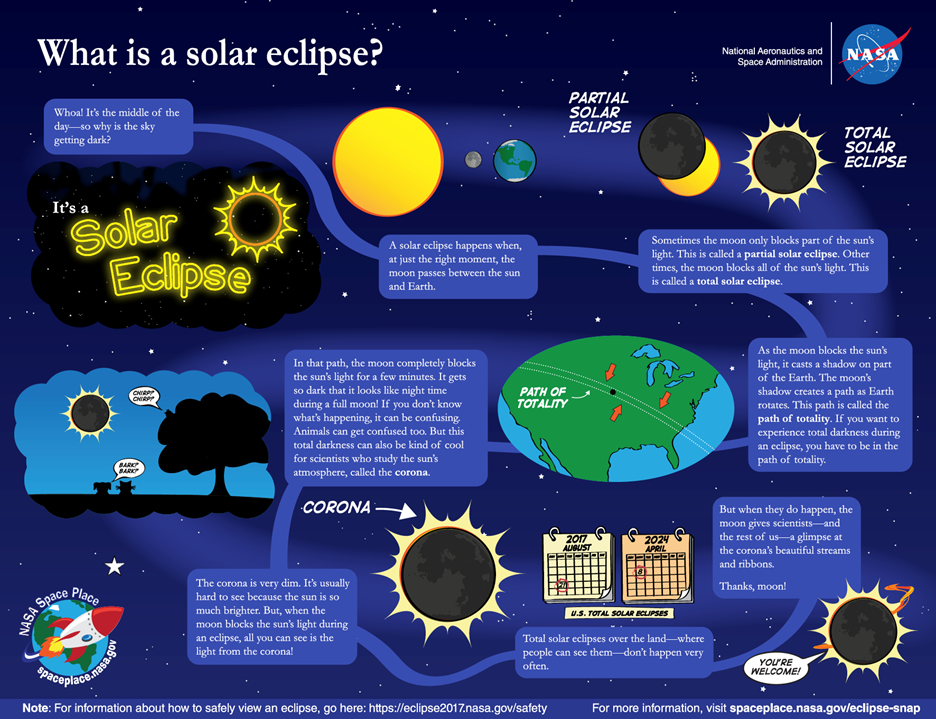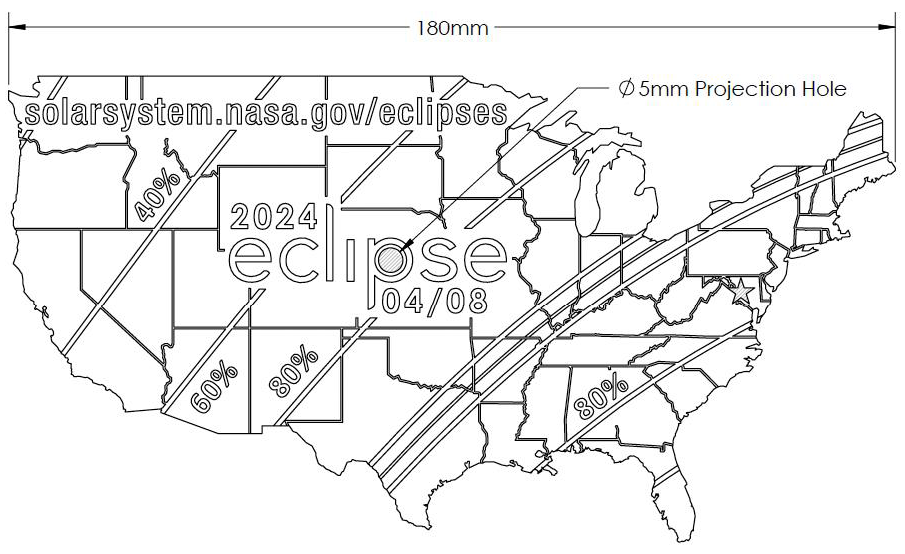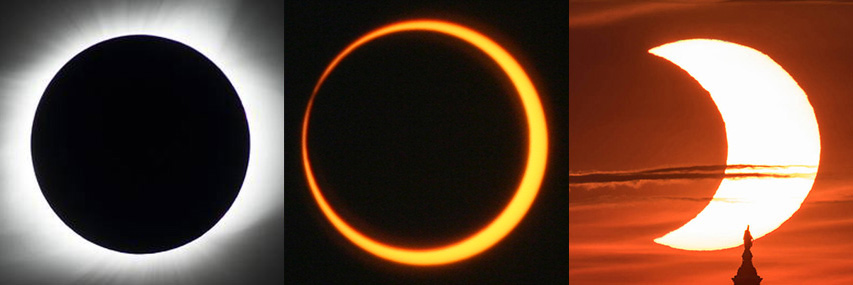Mini Lesson/Activity
What is a Solar Eclipse?
Overview
In this activity students will make observations about the objects, size, distance, and motion of the Sun, Earth, and Moon during a solar eclipse.
Student Directions
Remember to never look directly at the Sun without proper safety equipment.
NASA views phenomena from many different perspectives in order to understand them. View and compare these two perspectives of a total solar eclipse in 2017. What do scientists learn from each perspective?
Materials:
Use one of the following options for answering questions.
- What is a Solar Eclipse? Google Form
- What is a Solar Eclipse? Google Doc
- What is a Solar Eclipse? PDF
Steps:
- View an animation of a total solar eclipse. Animations are used to help explain phenomena that are hard to view. A total solar eclipse is visible only on a small portion of Earth, so this type of animation can make this phenomenon accessible to people who are unable to view a total solar eclipse in their location. Answer the following questions about the animation.
- What objects are in the animation?
- Estimate the size and distance of those objects.
- Describe the motion of those objects.
- Where is the observation being made from?
- View imagery of the 2017 total solar eclipse captured from space by NASA’s Earth Polychromatic Imaging Camera (EPIC) onboard NOAA’s Deep Space Climate Observatory (DSCOVR). Answer the following questions about the imagery.
- View NASA's Epic View of 2017 Eclipse Across America (There is no sound.).
- What objects are in the video?
- Estimate the size and distance of those objects.
- Describe the motion of those objects.
- Where is the observation being made from?
- Using what you learned from the two perspectives presented by the animation and the imagery?
- How would you describe a solar eclipse?
- What is your evidence for your explanation?
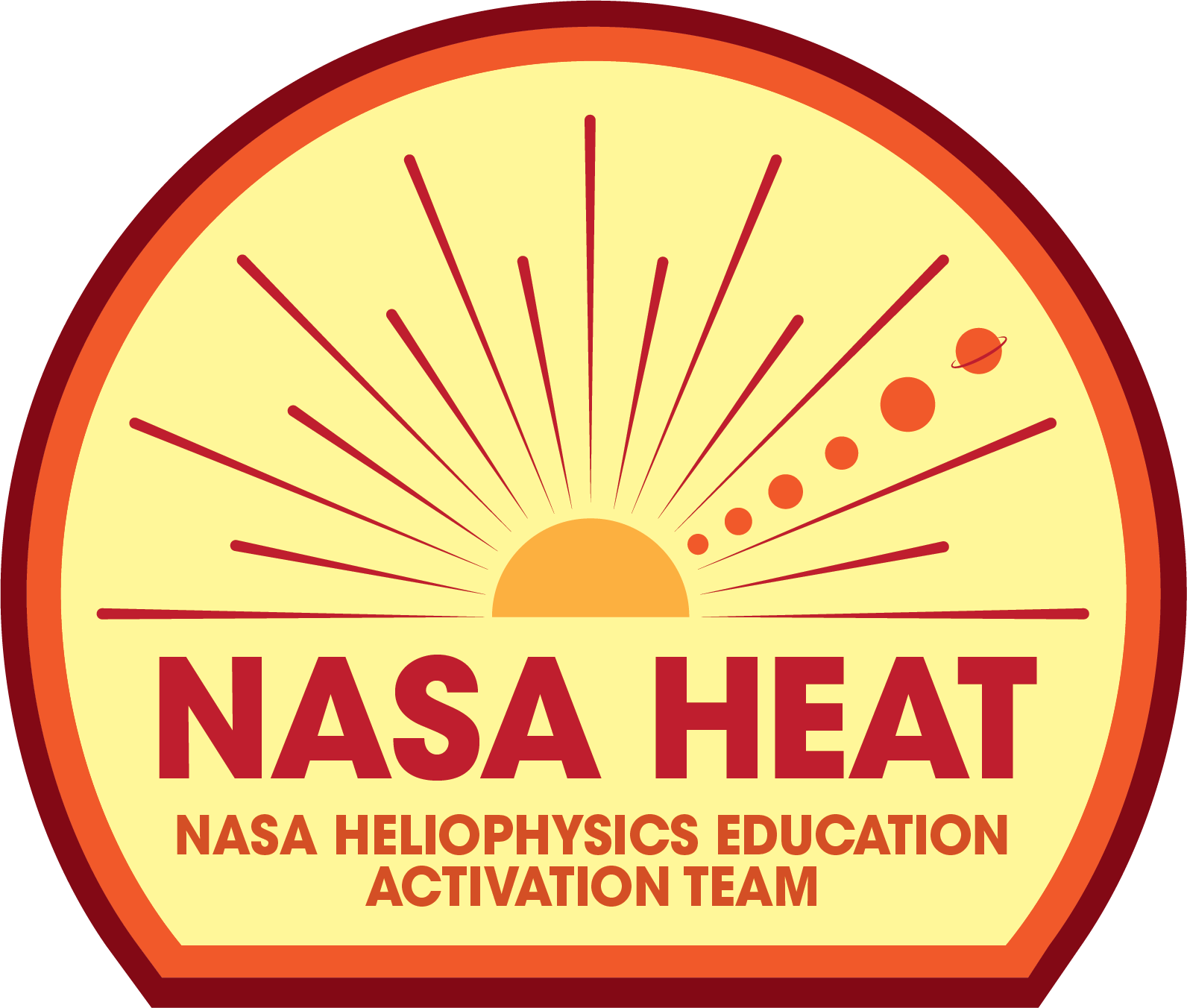
Sources:
- Feimer, W. (2016, March 3). CILab: Solar Eclipse Animation. Retrieved January 29, 2023, from https://svs.gsfc.nasa.gov/20233
- NASA's EPIC View of 2017 Eclipse Across America. (2017, August 22). YouTube. Retrieved January 29, 2023, from https://www.youtube.com/watch?v=pm7tfLvHmXA
- NASA's Goddard Space Flight Center. Conceptual Image Lab Solar Eclipse Animation. Retrieved January 29, 2023, from https://www.youtube.com/watch?v=woqqRtDQJbo
Teacher Note
Teachers, these mini lessons/student activities are perfect "warm up" tasks that can be used as a hook, bell ringer, exit slip, etc. They take less than a class period to complete. Learn more on the "My NASA Data What are Mini Lessons?" page.
Teachers who are interested in receiving the answer key, please complete the Teacher Key Request and Verification Form. We verify that requestors are teachers prior to sending access to the answer keys as we’ve had many students try to pass as teachers to gain access.
Disciplinary Core Ideas:
- ESS1B: Earth and the Solar System
Crosscutting Concepts:
- Patterns
Science and Engineering Practices:
- Developing and Using Models

